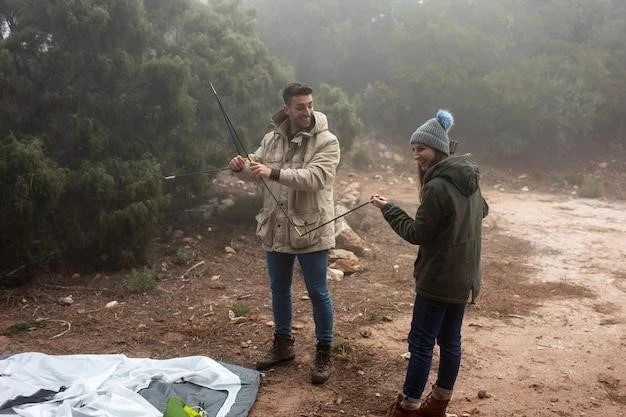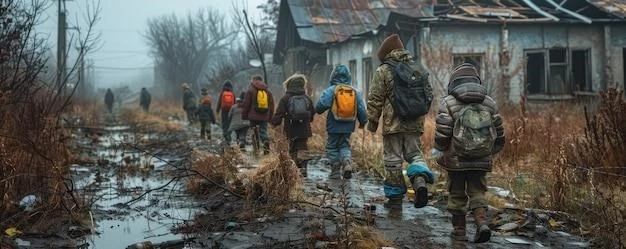Natural disasters are an unfortunate reality of our world․ From hurricanes and earthquakes to floods and wildfires, these events can leave behind a trail of devastation, upending lives and communities in an instant․ While governments and aid organizations play a crucial role in providing immediate relief and support, the long-term recovery of a community hinges on the strength and resilience of its people․

The Essence of Community Resilience
Community resilience, in the context of natural disasters, refers to the capacity of individuals, families, and social groups within a geographical area to collectively cope with, adapt to, and recover from the impacts of a disaster․ It is the inherent strength that allows a community not only to bounce back from adversity but to emerge stronger and better prepared for future challenges․
Why Community Matters: The Multifaceted Power of Collective Action
The power of community in disaster recovery is undeniable and manifests in various ways:
1․ Social Support Networks: A Lifeline in Times of Crisis
- Strong social connections within a community provide vital emotional and practical support to those affected by disaster․ Neighbors helping neighbors, sharing resources, and offering comfort and reassurance can mitigate the psychological toll of trauma and loss․
- These informal support networks often spring into action before official aid arrives, providing immediate assistance and fostering a sense of solidarity and shared purpose․
2․ Local Knowledge: Navigating the Recovery Maze
- Community members possess invaluable local knowledge about their specific needs, vulnerabilities, and resources․ This intimate understanding of the local context is essential for shaping effective recovery strategies and ensuring that assistance is tailored to the unique challenges faced by the community․
3․ Collective Action: Rebuilding Together٫ Stronger
- The spirit of volunteerism and community engagement is a powerful force in post-disaster recovery․ From clearing debris and rebuilding homes to supporting local businesses and revitalizing community spaces, the collective efforts of residents are instrumental in restoring normalcy and creating a sense of hope for the future․

Examples of Community Resilience in Action
History is replete with inspiring examples of communities around the world demonstrating remarkable resilience in the face of devastating natural disasters:
- The Great East Japan Earthquake and Tsunami (2011): Despite suffering unimaginable loss, the coastal communities of Japan exhibited extraordinary resilience․ Neighbors helped each other evacuate, shared food and shelter, and worked tirelessly to rebuild their lives and communities․ The spirit of “Ganbatsu” (meaning to persevere and never give up) became a rallying cry, reflecting the deep-seated cultural values of unity and collective responsibility․
- Hurricane Katrina (2005): While Hurricane Katrina exposed systemic vulnerabilities in disaster preparedness and response, it also showcased the power of community․ In the aftermath of the storm, residents formed informal networks to rescue stranded neighbors, share resources, and provide support to those who had lost everything․ Community organizations played a vital role in filling the gaps in aid distribution and providing long-term support for recovery․
Fostering Community Resilience: Investing in Preparedness and Social Cohesion
Building resilient communities is not merely a reactive endeavor; it requires proactive planning, investment, and a commitment to strengthening social fabric․ Key strategies include:
1․ Strengthening Social Connections: Building Bridges Before the Storm
- Encourage the formation of community groups and networks that foster social interaction, trust, and reciprocity․ These can be based on shared interests, neighborhoods, or cultural backgrounds․
- Support community events and initiatives that bring people together and create opportunities for interaction and collaboration․
2․ Empowering Communities: Knowledge is Power
- Provide community members with access to disaster preparedness training and resources, equipping them with the knowledge and skills to prepare for and respond effectively to disasters․
- Facilitate community-based vulnerability assessments and risk reduction planning, ensuring that local knowledge and perspectives are integrated into preparedness strategies․
3․ Investing in Community Infrastructure: Building Back Better
- Prioritize the development of resilient infrastructure that can withstand the impacts of natural disasters․ This includes strengthening building codes, investing in early warning systems, and protecting critical infrastructure such as hospitals and power grids․
- Support community-led recovery efforts that prioritize sustainability, inclusivity, and the long-term well-being of all residents․
Conclusion: The Enduring Strength of Human Connection
The road to recovery from a natural disaster is long and arduous, but the power of community provides a beacon of hope․ By investing in social cohesion, empowering communities with knowledge, and building back better, we can create a future where communities are not just resilient but thrive in the face of adversity․










